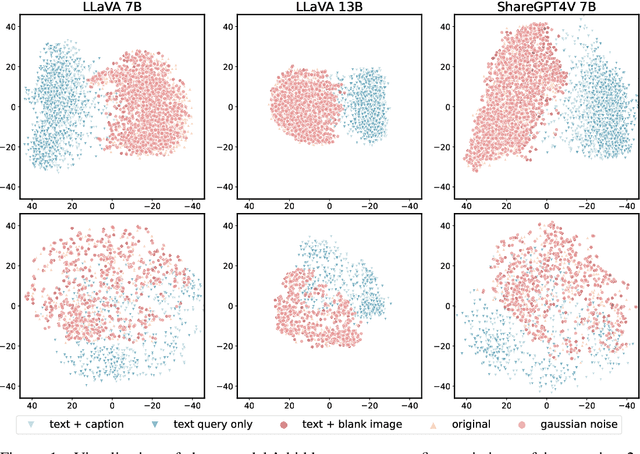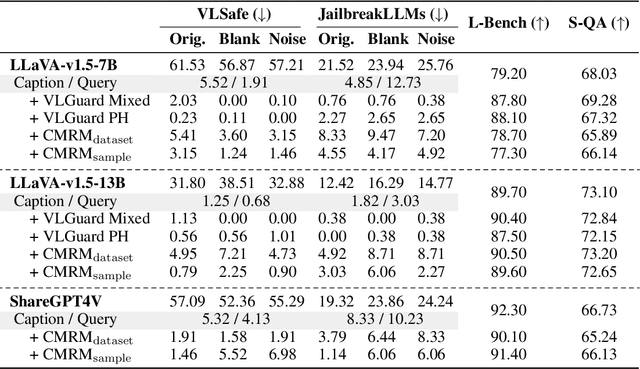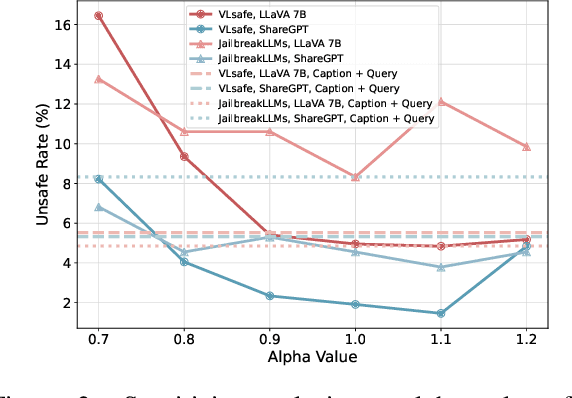Ling Liu
Language-Vision Planner and Executor for Text-to-Visual Reasoning
Jun 09, 2025Abstract:The advancement in large language models (LLMs) and large vision models has fueled the rapid progress in multi-modal visual-text reasoning capabilities. However, existing vision-language models (VLMs) to date suffer from generalization performance. Inspired by recent development in LLMs for visual reasoning, this paper presents VLAgent, an AI system that can create a step-by-step visual reasoning plan with an easy-to-understand script and execute each step of the plan in real time by integrating planning script with execution verifications via an automated process supported by VLAgent. In the task planning phase, VLAgent fine-tunes an LLM through in-context learning to generate a step-by-step planner for each user-submitted text-visual reasoning task. During the plan execution phase, VLAgent progressively refines the composition of neuro-symbolic executable modules to generate high-confidence reasoning results. VLAgent has three unique design characteristics: First, we improve the quality of plan generation through in-context learning, improving logic reasoning by reducing erroneous logic steps, incorrect programs, and LLM hallucinations. Second, we design a syntax-semantics parser to identify and correct additional logic errors of the LLM-generated planning script prior to launching the plan executor. Finally, we employ the ensemble method to improve the generalization performance of our step-executor. Extensive experiments with four visual reasoning benchmarks (GQA, MME, NLVR2, VQAv2) show that VLAgent achieves significant performance enhancement for multimodal text-visual reasoning applications, compared to the exiting representative VLMs and LLM based visual composition approaches like ViperGPT and VisProg, thanks to the novel optimization modules of VLAgent back-engine (SS-Parser, Plan Repairer, Output Verifiers). Code and data will be made available upon paper acceptance.
Residual Cross-Attention Transformer-Based Multi-User CSI Feedback with Deep Joint Source-Channel Coding
May 26, 2025Abstract:This letter proposes a deep-learning (DL)-based multi-user channel state information (CSI) feedback framework for massive multiple-input multiple-output systems, where the deep joint source-channel coding (DJSCC) is utilized to improve the CSI reconstruction accuracy. Specifically, we design a multi-user joint CSI feedback framework, whereby the CSI correlation of nearby users is utilized to reduce the feedback overhead. Under the framework, we propose a new residual cross-attention transformer architecture, which is deployed at the base station to further improve the CSI feedback performance. Moreover, to tackle the "cliff-effect" of conventional bit-level CSI feedback approaches, we integrated DJSCC into the multi-user CSI feedback, together with utilizing a two-stage training scheme to adapt to varying uplink noise levels. Experimental results demonstrate the superiority of our methods in CSI feedback performance, with low network complexity and better scalability.
MolLangBench: A Comprehensive Benchmark for Language-Prompted Molecular Structure Recognition, Editing, and Generation
May 21, 2025Abstract:Precise recognition, editing, and generation of molecules are essential prerequisites for both chemists and AI systems tackling various chemical tasks. We present MolLangBench, a comprehensive benchmark designed to evaluate fundamental molecule-language interface tasks: language-prompted molecular structure recognition, editing, and generation. To ensure high-quality, unambiguous, and deterministic outputs, we construct the recognition tasks using automated cheminformatics tools, and curate editing and generation tasks through rigorous expert annotation and validation. MolLangBench supports the evaluation of models that interface language with different molecular representations, including linear strings, molecular images, and molecular graphs. Evaluations of state-of-the-art models reveal significant limitations: the strongest model (o3) achieves $79.2\%$ and $78.5\%$ accuracy on recognition and editing tasks, which are intuitively simple for humans, and performs even worse on the generation task, reaching only $29.0\%$ accuracy. These results highlight the shortcomings of current AI systems in handling even preliminary molecular recognition and manipulation tasks. We hope MolLangBench will catalyze further research toward more effective and reliable AI systems for chemical applications.
Adverseness vs. Equilibrium: Exploring Graph Adversarial Resilience through Dynamic Equilibrium
May 20, 2025Abstract:Adversarial attacks to graph analytics are gaining increased attention. To date, two lines of countermeasures have been proposed to resist various graph adversarial attacks from the perspectives of either graph per se or graph neural networks. Nevertheless, a fundamental question lies in whether there exists an intrinsic adversarial resilience state within a graph regime and how to find out such a critical state if exists. This paper contributes to tackle the above research questions from three unique perspectives: i) we regard the process of adversarial learning on graph as a complex multi-object dynamic system, and model the behavior of adversarial attack; ii) we propose a generalized theoretical framework to show the existence of critical adversarial resilience state; and iii) we develop a condensed one-dimensional function to capture the dynamic variation of graph regime under perturbations, and pinpoint the critical state through solving the equilibrium point of dynamic system. Multi-facet experiments are conducted to show our proposed approach can significantly outperform the state-of-the-art defense methods under five commonly-used real-world datasets and three representative attacks.
Multi-Agent Reinforcement Learning with Focal Diversity Optimization
Feb 06, 2025Abstract:The advancement of Large Language Models (LLMs) and their finetuning strategies has triggered the renewed interests in multi-agent reinforcement learning. In this paper, we introduce a focal diversity-optimized multi-agent reinforcement learning approach, coined as MARL-Focal, with three unique characteristics. First, we develop an agent-fusion framework for encouraging multiple LLM based agents to collaborate in producing the final inference output for each LLM query. Second, we develop a focal-diversity optimized agent selection algorithm that can choose a small subset of the available agents based on how well they can complement one another to generate the query output. Finally, we design a conflict-resolution method to detect output inconsistency among multiple agents and produce our MARL-Focal output through reward-aware and policy-adaptive inference fusion. Extensive evaluations on five benchmarks show that MARL-Focal is cost-efficient and adversarial-robust. Our multi-agent fusion model achieves performance improvement of 5.51\% compared to the best individual LLM-agent and offers stronger robustness over the TruthfulQA benchmark. Code is available at https://github.com/sftekin/rl-focal
Virus: Harmful Fine-tuning Attack for Large Language Models Bypassing Guardrail Moderation
Jan 29, 2025Abstract:Recent research shows that Large Language Models (LLMs) are vulnerable to harmful fine-tuning attacks -- models lose their safety alignment ability after fine-tuning on a few harmful samples. For risk mitigation, a guardrail is typically used to filter out harmful samples before fine-tuning. By designing a new red-teaming method, we in this paper show that purely relying on the moderation guardrail for data filtration is not reliable. Our proposed attack method, dubbed Virus, easily bypasses the guardrail moderation by slightly modifying the harmful data. Experimental results show that the harmful data optimized by Virus is not detectable by the guardrail with up to 100\% leakage ratio, and can simultaneously achieve superior attack performance. Finally, the key message we want to convey through this paper is that: \textbf{it is reckless to consider guardrail moderation as a clutch at straws towards harmful fine-tuning attack}, as it cannot solve the inherent safety issue of the pre-trained LLMs. Our code is available at https://github.com/git-disl/Virus
From Intention To Implementation: Automating Biomedical Research via LLMs
Dec 12, 2024Abstract:Conventional biomedical research is increasingly labor-intensive due to the exponential growth of scientific literature and datasets. Artificial intelligence (AI), particularly Large Language Models (LLMs), has the potential to revolutionize this process by automating various steps. Still, significant challenges remain, including the need for multidisciplinary expertise, logicality of experimental design, and performance measurements. This paper introduces BioResearcher, the first end-to-end automated system designed to streamline the entire biomedical research process involving dry lab experiments. BioResearcher employs a modular multi-agent architecture, integrating specialized agents for search, literature processing, experimental design, and programming. By decomposing complex tasks into logically related sub-tasks and utilizing a hierarchical learning approach, BioResearcher effectively addresses the challenges of multidisciplinary requirements and logical complexity. Furthermore, BioResearcher incorporates an LLM-based reviewer for in-process quality control and introduces novel evaluation metrics to assess the quality and automation of experimental protocols. BioResearcher successfully achieves an average execution success rate of 63.07% across eight previously unmet research objectives. The generated protocols averagely outperform typical agent systems by 22.0% on five quality metrics. The system demonstrates significant potential to reduce researchers' workloads and accelerate biomedical discoveries, paving the way for future innovations in automated research systems.
$H^3$Fusion: Helpful, Harmless, Honest Fusion of Aligned LLMs
Nov 26, 2024



Abstract:Alignment of pretrained LLMs using instruction-based datasets is critical for creating fine-tuned models that reflect human preference. A growing number of alignment-based fine-tuning algorithms and benchmarks emerged recently, fueling the efforts on effective alignments of pre-trained LLMs to ensure helpful, harmless, and honest answers from both open-source and closed-source LLMs. This paper tackles this problem by developing an alignment fusion approach, coined as $H^3$Fusion, with three unique characteristics. First, $H^3$Fusion ensembles multiple individually aligned LLMs to create a final fine-tuned alignment model with enhanced capabilities beyond those of individual models, delivering robust alignment through promoting helpful, harmless, honest fusion. Second, $H^3$Fusion leverages the mixture-of-experts (MoE) methodology in two steps. We first freeze the multi-head attention weights of each individual model while tuning the FFN layer during alignment fusion. Then we merge the aligned model weights with an expert router according to the type of input instruction and dynamically select a subset of experts that are best suited for producing the output response. Finally, we boost the performance of the resulting $H^3$3Fusion model by introducing gating loss and regularization terms. The former penalizes the selection errors of the expert-router, and the latter mediates the expert weights drifting during fine-tuning and dynamically adjusts the fusion behavior of the resulting model by canalizing the activations on the experts. Extensive evaluations on three benchmark datasets show that $H^3$3Fusion is more helpful, less harmful, and more honest from two aspects: it outperforms each individually aligned model by $11.37\%$, and it provides stronger robustness compared to the state-of-the-art LLM ensemble approaches by $13.77\%$. Code is available at github.com/sftekin/h3fusion.
Unraveling and Mitigating Safety Alignment Degradation of Vision-Language Models
Oct 11, 2024



Abstract:The safety alignment ability of Vision-Language Models (VLMs) is prone to be degraded by the integration of the vision module compared to its LLM backbone. We investigate this phenomenon, dubbed as ''safety alignment degradation'' in this paper, and show that the challenge arises from the representation gap that emerges when introducing vision modality to VLMs. In particular, we show that the representations of multi-modal inputs shift away from that of text-only inputs which represent the distribution that the LLM backbone is optimized for. At the same time, the safety alignment capabilities, initially developed within the textual embedding space, do not successfully transfer to this new multi-modal representation space. To reduce safety alignment degradation, we introduce Cross-Modality Representation Manipulation (CMRM), an inference time representation intervention method for recovering the safety alignment ability that is inherent in the LLM backbone of VLMs, while simultaneously preserving the functional capabilities of VLMs. The empirical results show that our framework significantly recovers the alignment ability that is inherited from the LLM backbone with minimal impact on the fluency and linguistic capabilities of pre-trained VLMs even without additional training. Specifically, the unsafe rate of LLaVA-7B on multi-modal input can be reduced from 61.53% to as low as 3.15% with only inference-time intervention. WARNING: This paper contains examples of toxic or harmful language.
LLM-TOPLA: Efficient LLM Ensemble by Maximising Diversity
Oct 04, 2024Abstract:Combining large language models during training or at inference time has shown substantial performance gain over component LLMs. This paper presents LLM-TOPLA, a diversity-optimized LLM ensemble method with three unique properties: (i) We introduce the focal diversity metric to capture the diversity-performance correlation among component LLMs of an ensemble. (ii) We develop a diversity-optimized ensemble pruning algorithm to select the top-k sub-ensembles from a pool of $N$ base LLMs. Our pruning method recommends top-performing LLM subensembles of size $S$, often much smaller than $N$. (iii) We generate new output for each prompt query by utilizing a learn-to-ensemble approach, which learns to detect and resolve the output inconsistency among all component LLMs of an ensemble. Extensive evaluation on four different benchmarks shows good performance gain over the best LLM ensemble methods: (i) In constrained solution set problems, LLM-TOPLA outperforms the best-performing ensemble (Mixtral) by 2.2\% in accuracy on MMLU and the best-performing LLM ensemble (MoreAgent) on GSM8k by 2.1\%. (ii) In generative tasks, LLM-TOPLA outperforms the top-2 performers (Llama70b/Mixtral) on SearchQA by $3.9\mathrm{x}$ in F1, and on XSum by more than $38$ in ROUGE-1. Our code and dataset, which contains outputs of 8 modern LLMs on 4 benchmarks is available at https://github.com/git-disl/llm-topla
 Add to Chrome
Add to Chrome Add to Firefox
Add to Firefox Add to Edge
Add to Edge